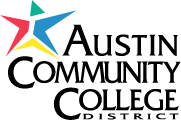Here at ACC, faculty and staff are expected to make sure the content that is used in teaching and learning is highly usable and accessible for all learners.
This page contains lists of resources, videos, how-to documents, etc.. resources to help ACC Faculty and staff course content and the documents you use in them accessible.
For more information about fixing your accessibility issues, select the areas below.
Accessibility is Everyone’s Responsibility.
– It’s not only the legal thing to do, it’s the right thing to do.
Definitions, Concepts, Common Errors, Reasonable Accommodations
ACC Faculty/staff are expected to make content and communications accessible, i.e., provide accommodations.
Austin Community College Mission and Value
Accessibility
Plan in advance for all learners who may be enrolling in your course and be proactive!
Accommodations at ACC
Information about students working with SAS (Student Accessibility Services)
Faculty Compliance and Responsibility
“…Institutions of postsecondary education must provide an appropriate academic adjustment based on students’ disabilities and individual needs when necessary to avoid discrimination…”
Student Accessibility Services
To provide equitable and effective access for students with documented disabilities in order to support their full participation in College classes and activities.
Accessibility Workshop Materials
Accessibility and Usability Making it Happen at Austin Community College
Google Slides Presentation
Accessibility Quick Guide
Word doc listing quick hints for accessibility with resource links to software accessibility help pages.
BlackBoard Accessibility Information Orientation
Summary of Accessibility Concepts
Fixing Accessibility in Microsoft Word – 5 tips for Accessibility
Presentation with screenshots on how to do accessible fixes in Word. Also includes Accessibility tips
Duplicate Link below
How to Use Blackboard Ally
Improve the usability and accessibility of your content with Blackboard Ally.
Website Tools
Use these tools to check the contrast of your website
Color Concepts
Key Concept #1:
Avoid using color alone for emphasis or identification. Only 10 more days left in the semester! As a reminder, the deadline for Test 5 (the final exam) is next SATURDAY.
Key Concept #2:
Use color tone and brightness to distinguish similar elements.
Key Concept #3:
Have the right degree of contrast. The text in your document should be readable in a high-contrast mode. For example, use high-contrast color schemes on opposite ends of the color spectrum. High-contrast color schemes make distinguishing text and shapes easier for people with a color vision deficiency.
Note: The high contrast between typical print text and the background.
Accessibility
…Accessibility means that people with disabilities can equally perceive, understand, navigate, and interact with websites and tool. In most cases, accessibility standards will also add usability to a Web site, but accessibility consists of more than just general usability (PennState Accessibility and Usability at Penn State 2025).
Categories of Disabilities
- Visual: Blindness, low vision, color-blindness
- Cognitive: Learning disabilities, distractibility, inability to remember or focus on large amounts of information.
- Hearing: Deafness and hard-of-hearing
- Motor: Inability to use a mouse, slow response time, limited fine motor control.
Reasonable Accommodations
A reasonable accommodation (RA) is a modification or adjustment to a job, a work environment, or a hiring process, based on a disability or medical condition. (US Department of Education, 2025)
Usability
Usability refers to the ability of average users with the “standard” range of equipment or perceptual and motor abilities to navigate and use a Web site or tool, location, etc…
Usability is about designing products to be effective, efficient, and satisfying.
Universal Design
Universal Design (UD) applied to online learning emphasizes creating digital learning environments that are accessible, inclusive, and effective for all learners, regardless of their abilities, backgrounds, or learning preferences. The principles of Universal Design for Learning (UDL), a framework derived from UD, guide this approach.
WCAG/CAST
ChatGPT. https://chatgpt.com
The principles of Universal Design are:
- Equitable Use: The design is useful & marketable to people with diverse abilities.
- Flexibility in Use: The design accommodates a wide range of individual preferences & abilities.
- Simple and Intuitive Use: Use of the design is easy to understand, regardless of the user’s experience, knowledge, language skills, or current concentration level.
- Perceptible Information: The design communicates necessary information effectively to the user, regardless of ambient conditions or the user’s sensory abilities.
- Tolerance for Error: The design minimizes hazards & the adverse consequences of accidental or unintended actions.
- Low Physical Effort: The design can be used efficiently & comfortably with a minimum of fatigue.
- Size and Space for Approach and Use: Appropriate size & space is provided for approach, reach, manipulation, and use regardless of user’s body size, posture, or mobility.
Hints for Success:
Images files need to be clear and easy to understand with sufficient contrast. If the image or graphic is educationally important, the alt description or caption must support that. The image or graphic, if complicated, should be explained in the text area where the image is located, as the alt may not support a large description.
Videos and Audio must be captioned. Video tools like Panopto will automatically caption your video, but the captions must be checked for correctness. Panopto will also caption audio that is uploaded to it.
Distance Education can provide accessibility assistance. Contact [email protected]
Examples of reasonable accommodations
Google doc list
Accommodations
US Department of Labor
“…reasonable accommodations should not be viewed as “special treatment,” and they often benefit all employees…”
Examples of Reasonable Accommodations
US Office of Personnel Management


